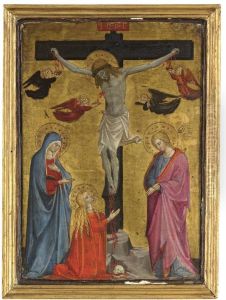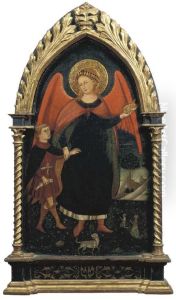Stefano D'Antonio Di Vanni Paintings
Stefano D'Antonio Di Vanni, more commonly known as Stefano di Giovanni or Sassetta, was a significant figure in the world of Italian Renaissance painting. Born in 1430 in Siena, Italy, his contributions to art during the Quattrocento period were profound, reflecting the intricate transition from the medieval style of the Gothic period to the emerging Renaissance sensibility. The exact details of his early life are somewhat obscure, a common issue when studying artists from this era, but it is believed he was trained within the vibrant artistic community of Siena, which, at the time, was a bustling center for religious and secular art.
Sassetta's work is characterized by its delicate, ethereal quality, combining elements of the International Gothic style with the emerging principles of Renaissance perspective and humanist themes. His paintings often featured religious subjects, common for the period, rendered with a grace and emotional depth that set his work apart from many of his contemporaries. One of his most famous works, the 'San Sepolcro Altarpiece' (1437–1444), demonstrates his skill in using color and light to create spiritual narratives that were both deeply personal and universally accessible.
Throughout his career, Sassetta was influenced by both local and foreign artists, incorporating the linear grace of French Gothic illumination, the narrative clarity of Giotto, and the refined decorative qualities of the Sienese school into his own unique style. Despite this, he never completely abandoned the Gothic sensibilities of his early training, which lent his work a distinctive, otherworldly quality. His innovative use of perspective and composition, however, marked a significant contribution to the development of Renaissance art in Italy.
Sassetta's influence extended beyond his immediate geographical area, impacting the development of Renaissance art across Italy. Though his exact date of death is sometimes debated, it is most commonly listed as 1488. The legacy of his work lies not only in its beauty and spiritual depth but also in its role as a bridge between the medieval and Renaissance worlds. His paintings remain a testament to the transformative power of art, reflecting the dynamic cultural shifts of 15th-century Italy. Today, Sassetta's works are celebrated in museums and collections around the world, recognized for their unique blend of Gothic tradition and Renaissance innovation.

